
|
Sauteed broccoli with dried scallop. Photos by Fan Zhen / China Daily |
|
Shang Palace's popular starter is the salad of lo hei, Cantonese for "tossing up good fortune". |
|
Pan-fried nian gao, or glutinous cake, which is homophonic with "higher every year" in Chinese. |
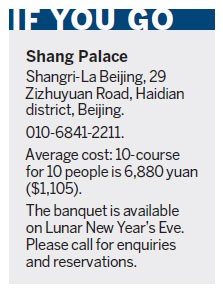
China is huge enough that regions in the north and south seem like two different worlds. Yet, no matter northerners or southerners, all Chinese believe you are what you eat - and that is why the naming of the dishes for the all-important Spring Festival dinner is so important.
And when it comes to that Big Meal of the year, aptly named delicacies from all parts of the country happily appear on the table. We recently saw exactly such an example on the menus of the Shang Palace at Shangri-La Beijing.
Almost all set menus start with "lo hei", Cantonese for "tossing up good fortune", manifesting itself in a plate of colorful salad ingredients in individual piles - thinly sliced fresh raw salmon, shredded white radish, carrots and jellyfish, pickled Chinese leeks and a host of other symbols of good health and wealth.
The cornucopia of ingredients, all fresh and enticing on their own, is only part of the ritual, which involves chanting the appropriate mantras as you prepare the salad for the final toss.
As the special dressing is poured on, it is "golden liquid lubricates your way to great fortune", a squeeze of lime is all about "big fortune descends upon us", lime being homophonic with fortune.
The mandatory sprinkle of five-spice powder (representing gold dust) comes in red packets, which usually hold the "lucky money" given out to the elderly and the young.
Shang Palace's Cantonese executive chef Sham Yun Ming makes sure it is well distributed so his diners enjoy good luck throughout the year.
Another auspicious southern tradition comes in a large basin, although it is presented in more delicate porcelain tureens at the restaurants. Pen cai, originally from Hong Kong's New Territories, is rich and indulgent in a similar vein.
"Pen", or the basin, is filled to the brim with whole abalones, chunky mushroom, hefty tenderloin cuts and solid meatballs braised in sauce. Traditionally, the hearty pot caters to a happy family clan or sometimes a village. The oversized heap represents a bountiful year ahead.
There is a full-fat dish from the north, too, which also augurs well for the year's prosperity. This is the braised pig trotter, trimmed to a barrel shaped roundness that represents family's reunion. In the north, there are also plenty of silver ingots in the house, in the guise of dumplings.
And that's why jiaozi also appears on Chef Sham's menus, a nod to the northern fondness for ingots in abundance.
But both north and south demand a fish on the table. Fish, rhyming with "more", is believed to bring an excess of blessings.
And then there is the special steamed sugared glutinous cake, or nian gao. Again, nian gao is homophonic with "higher every year", reflecting the collective ambitions of the diners.
At Chef Sham's table, the golden slices are coated in an egg batter and fried to a tender sweetness inside with a crisp coating outside.
Finally, the meal ends with fresh kumquats, little golden fruits that represent good luck and auspicious good fortune. And that is the perfect happy ending.
sunye@chinadaily.com.cn
(China Daily 02/02/2013 page12)

2013 Chinese New Year |

Hidden dragons, crouching tigers |
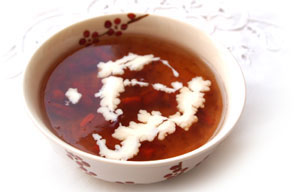
Soap beans, silver ears and peach gum |

Special:Winter Solstice |
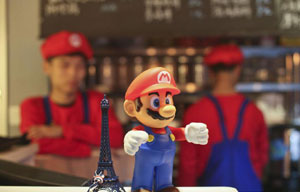
Mario themed restaurant opens in Tianjin |
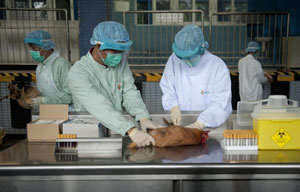
HK carries out avian influenza tests on imported chicken |
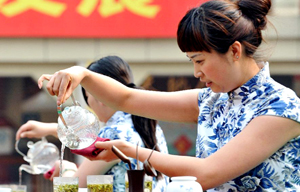
2013 China Tea Conference kicks off in Zhejiang |
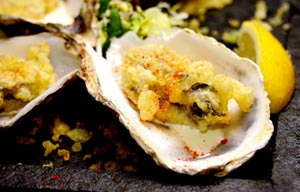
Oysters make spring sing for diners in Beijing |